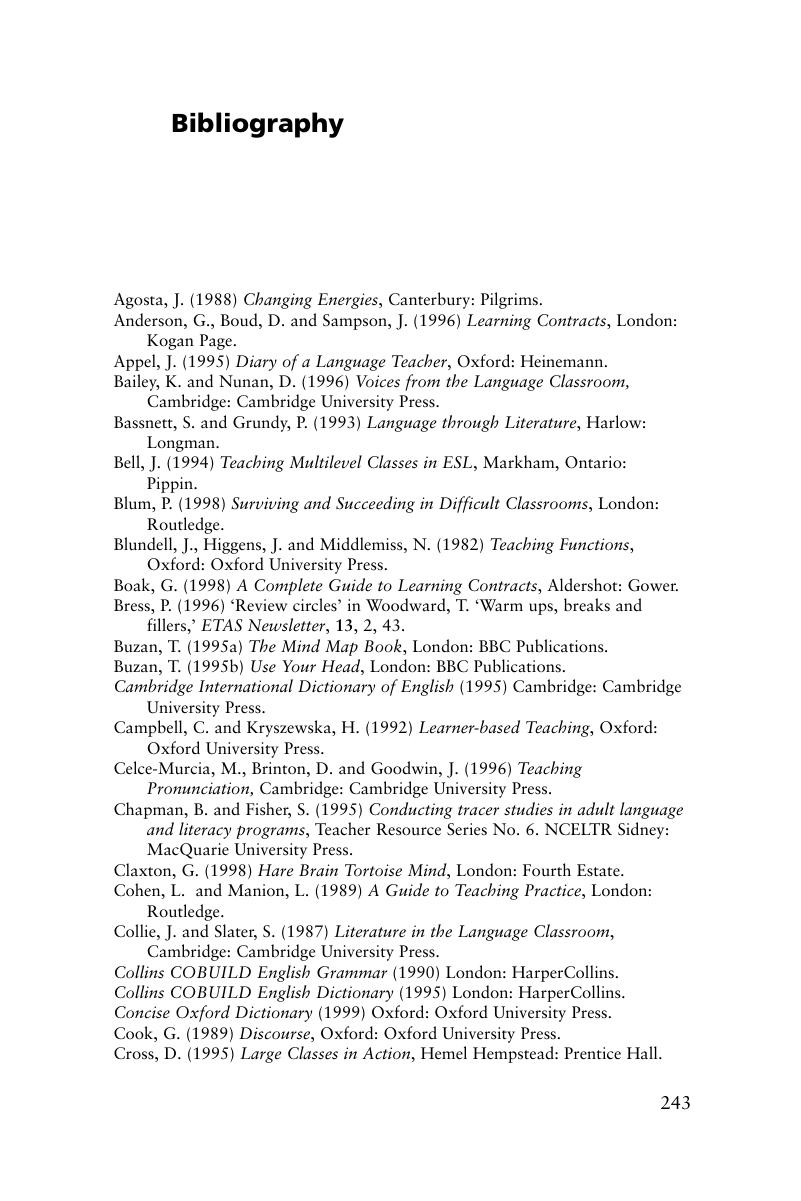Book contents
- Frontmatter
- Contents
- Thanks and Acknowledgements
- Map of the book
- Introduction
- 1 Who are the students?
- 2 How long is the lesson?
- 3 What can go into a lesson?
- 4 How do people learn and so how can we teach?
- 5 What can we teach with?
- 6 How can we vary the activities we do?
- 7 Getting down to the preparation
- 8 What are our freedoms and constraints?
- Bibliography
- Index
- References
Bibliography
Published online by Cambridge University Press: 05 May 2010
- Frontmatter
- Contents
- Thanks and Acknowledgements
- Map of the book
- Introduction
- 1 Who are the students?
- 2 How long is the lesson?
- 3 What can go into a lesson?
- 4 How do people learn and so how can we teach?
- 5 What can we teach with?
- 6 How can we vary the activities we do?
- 7 Getting down to the preparation
- 8 What are our freedoms and constraints?
- Bibliography
- Index
- References
Summary

- Type
- Chapter
- Information
- Planning Lessons and CoursesDesigning Sequences of Work for the Language Classroom, pp. 243 - 247Publisher: Cambridge University PressPrint publication year: 2001



